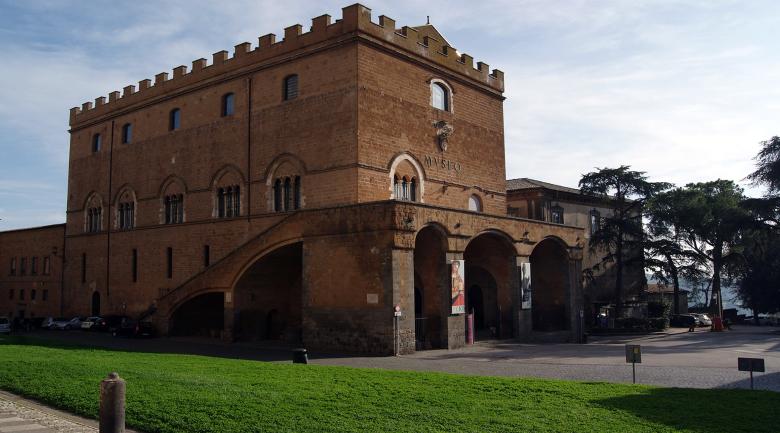They first dug through tuff and then through clay to reach the water tables and then lined the round walls of the well with brick. The work was finally completed in 1537.
The well shaft is sixty-two metres deep and thirteen metres wide. To reach its depths, two completely separate spiralling ramps, a sort of double helix, were built one over the other into the wall of the well so that those going down to the bottom to get water with their mules would not encounter those who, already laden with water, were on their way up.
Each ramp has 248 stairs that both man and beast could comfortably walk up and down. Light was provided by seventy-two windows that opened up to the shaft. The light diminishes as you get further down until it is quite dark. At the bottom is a small bridge that connects the two staircases.
The external part of the well up at ground level is a wide, low, cylindrical construction decorated with the Farnesian lilies of Pope Paul III, with two doors, one at either side.
The water in the well comes from a natural spring and remains constant thanks to a stream that drains off any excess water and the bridge that connects the two staircases can always be crossed.
The Pope also had Benvenuto Cellini coin a celebratory medallion which is now on display at the Vatican Museums. The inscription on the medallion reads UT POPULUS BIBAT, or SO THE PEOPLE MAY DRINK. The image on it is that of Moses striking the rock with his staff, from which water then gushes forth for the Jews to drink. A man can be seen scooping it up with a shell.
Over the entrance he had the phrase quod natura munimento inviderat industria adiecit (or "what nature stinted for provision, application has supplied") inscribed to celebrate the power of man's creativity, which can sometimes pick up where nature left off.
Unfortunately, Clement VII did not live to see the work he set in motion with his own eyes, which was completed under the papacy of Paul III. Today, the well can be visited in its entirety and has become a museum.
The name of the well has a rather strange history. The well brought to mind an enormous, almost endless, underground cavity in Ireland. It was once even believed that the Irish cavity linked the world of the living to that of eternity, that is, that beyond it were the gates of Purgatory. St. Patrick, who spent much time evangelizing in Ireland, enjoyed retreating in prayer there.
The Pope, who was well aware of this story, decided to name the deep well after the saint because it reminded him of the Irish cave in which St. Patrick prayed. And so a military well got a name with an aura of holiness. The expression "well of St. Patrick" is still used in Italy today to hint at a mysterious and incredibly wealthy reserve.






























